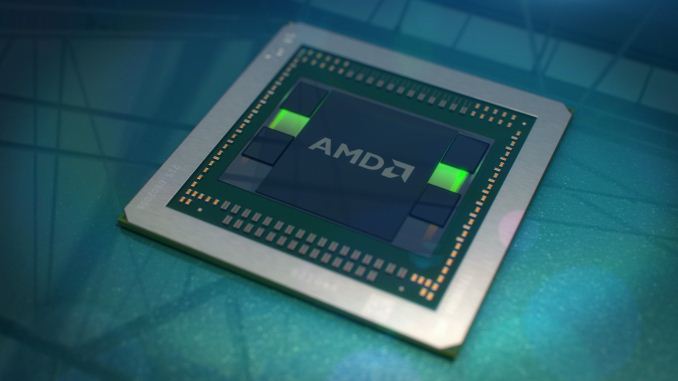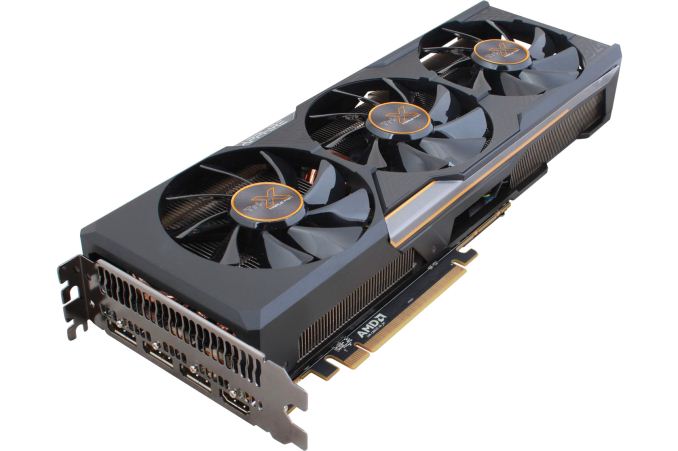The AMD Radeon R9 Fury Review, Feat. Sapphire & ASUS
by Ryan Smith on July 10, 2015 9:00 AM ESTFinal Words
Bringing this video card review to a close, we’ll start off with how the R9 Fury compares to its bigger sibling, the R9 Fury X. Although looking at the bare specifications of the two cards would suggest they’d be fairly far apart in performance, this is not what we have found. Between 4K and 1440p the R9 Fury’s performance deficit is only 7-8%, noticeably less than what we’d expect given the number of disabled CUs.
In fact a significant amount of the performance gap appears to be from the reduction in clockspeed, and not the number of CUs. And while overclocking back to R9 Fury X clockspeeds can’t recover all of the performance, it recovers a lot of it. This implies that Fiji on the whole is overweight on shading/texturing resources, as it’s not greatly impacted by having some of those resources cut off.
Consequently I can see why AMD opted to launch the R9 Fury X and R9 Fury separately, and to withhold the latter’s specifications until now, as this level of performance makes R9 Fury a bit of a spoiler for R9 Fury X. 7-8% makes R9 Fury notably slower than R9 Fury X, but it’s also $100 cheaper, or to turn this argument on its head, the last 10% or so that the R9 Fury X offers comes at quite the price premium. This arguably makes the R9 Fury the better value, and not that we’re complaining, but it does put AMD in an awkward spot.
As for the competition, that’s a bit more of a mixed bag. R9 Fury X had to compete with GTX 980 Ti but couldn’t surpass it, which hurt it and make the GTX the safer buy. On the other hand R9 Fury needs to compete with just the older GTX 980, and while it’s by no means a clean sweep for AMD, it’s a good outcome for AMD. The R9 Fury offers between 8% and 17% better performance than the GTX 980, depending on if we’re looking at 1440p or 4K. I don’t believe the R9 Fury is a great 4K card – if you really want 4K, you really need more rendering power at this time – but even at 1440p this is a solid performance lead.
Along with a performance advantage, the GTX 980 is also better competition for the R9 Fury (and Fiji in general) since the GTX 980 is only available with 4GB of VRAM. This negates the Fiji GPU’s 4GB HBM limit, which is one of the things that held back the R9 Fury X against the GTX 980 Ti. As a result there are fewer factors to consider, and in a straight-up performance shootout with the GTX 980 the R9 Fury is 10% more expensive for 8%+ better performance. This doesn’t make either card a notably better value, but makes the R9 Fury a very reasonable alternative to the GTX 980 on a price/performance basis.
The one area where the R9 Fury struggles however is power efficiency. GTX 980’s power efficiency is practically legendary at this point; R9 Fury’s is not. Even the lower power of our two R9 Fury cards, the ASUS STRIX, can’t come close to GTX 980’s efficiency. And that’s really all there is to that. If energy efficiency doesn’t matter to you then the R9 Fury’s performance is competitive, otherwise GTX 980 is a bit slower, a bit cheaper, and uses a lot less power. That said, AMD’s partners do deserve some credit for keeping their acoustics well under control despite the high power and heat load. It’s not an apples-to-apples comparison against the reference GTX 980 and its blower, but at the very least picking R9 Fury over GTX 980 doesn’t mean you have to pick a loud card as well.
And that brings us to the third aspect of this review, which is comparing the R9 Fury cards from Sapphire and ASUS. Both partners have come to the plate with some very good open air cooled designs, and while it’s a bit unusual for AMD to launch with so few partners, what those partners have put together certainly paint R9 Fury in a positive light.
Picking between the two ends up being a harder task than we expected, in part because of how different they are at times. From a performance perspective the two cards offer very similar performance, with Sapphire’s mild factory overclock giving them only the slightest of edges, which is more or less what we expected.
However the power and acoustics situation is very different. On its own the ASUS STRIX’s acoustics would look good, but compared to the Sapphire Tri-X’s deliciously absurd acoustics it’s the clear runner-up. On the other hand the ASUS card has a clear power efficiency advantage of its own, but I’m not convinced that this isn’t just a byproduct of the ASUS card randomly receiving a better chip. As a result I’m not convinced that this same efficiency advantage exists between all ASUS and Sapphire cards; ASUS’s higher voltage R9 Fury chips have to go somewhere.
In any case, both are solid cards, but if we have to issue a recommendation then it’s hard to argue with the Sapphire Tri-X’s pricing and acoustics right now. It’s the quietest of the R9 Fury cards, and it’s slightly cheaper as well. Otherwise ASUS’s strengths lie more on their included software and their reputation for support than in their outright performance in our benchmark suite.
And with that, we wrap up our review of the second product in AMD’s four Fiji launches. The R9 Fury was the last product with a scheduled launch date, however AMD has previously told us that the R9 Nano will launch this summer, meaning we should expect it in the next couple of months. With a focus on size and efficiency the R9 Nano should be a very different card from the R9 Fury and R9 Fury X, which makes us curious to see just what AMD can pull off when optimizing for efficiency over absolute performance. But that will be a question for another day.












288 Comments
View All Comments
akamateau - Tuesday, July 14, 2015 - link
Radeon 290x is 33% faster than 980 Ti with DX12 and Mantle. It is equal to Titan X.http://wccftech.com/amd-r9-290x-fast-titan-dx12-en...
Sefem - Wednesday, July 15, 2015 - link
You should stop reading wccftech.com this site is full of sh1t! you made also an error because they are comparing 290x to 980 and not the Ti!Asd :D I'm still laughing... those moron cited PCper's numbers as fps, they probably made the assumption since are 2 digit numbers but that's because PCper show numbers in million!!! look at that http://www.pcper.com/files/imagecache/article_max_...
wccftech.com also compare the the 290x on Mantle with the 980 on DX12, probably for an apple to apple comparison ;), the fun continue if you read this Futurmark's not on this particular benchmark, that essentially says something pretty obvious, number of draw calls don't reflect actual performance and thus shouldn't be used to compare GPU's
http://a.disquscdn.com/uploads/mediaembed/images/1...
Finally I think there's something wrong with PC world's results since NVIDIA should deliver more draw calls than AMD on DX11.
FlushedBubblyJock - Wednesday, July 15, 2015 - link
They told us Fury X was 20% and more faster, they lied then, too.Now amd fanboys need DX12 as a lying tool.
Failure requires lying, for fanboys.
Drumsticks - Friday, July 10, 2015 - link
Man auto correct plus an early morning post is hard. I meant "do you expect more optimized drivers to cause the Fury to leap further ahead of the 980, or the Fury X to catch up to the 980 Ti" haha. My bad.My first initial impression on that assessment would be yes, but I'm not an expert so I was wondering how many people would like to weigh in.
Samus - Friday, July 10, 2015 - link
Fuji has a lot more room for driver improvement and optimization than maxwell, which is quite well optimized by now. I'd expect the fury x to tie the 980ti in the near future, especially in dx12 games. But nvidia will probably have their new architecture ready by then.FlushedBubblyJock - Wednesday, July 15, 2015 - link
So, Nvidia is faster, and has been for many months, and still is faster, but a year or two into the future when amd finally has dxq12 drivers and there are actually one or two Dx12 games,why then, amd will have a card....
MY GOD HOW PATHETIC. I mean it sounded so good, you massaging their incompetence and utter loss.
evolucion8 - Friday, July 17, 2015 - link
Your continuous AMD bashing is more pathetic. Check the performance numbers of the GTX 680 when it was launched and check where it stands now? Do the same thing with the GTX 780 and then with the GTX 970, then talk.CiccioB - Monday, July 13, 2015 - link
That is another confirmation that AMD GCN doesn't scale well. That problem was already seen with Hawaii, but also Tahiti showed it's inefficiency with respect to smaller GPUs like Pitcairn.Nvidia GPUs scales almost linearly with respect to the resources integrated into the chip.
This has been a problem for AMD up to now, but it would be worse with new PP, as if no changes to solve this are introduced, nvidia could enlarge its gap with respect to AMD performances when they both can more than double the number of resources on the same die area.
Sdriver - Wednesday, July 15, 2015 - link
This resources reduction just means that AMD performance bottleneck is somewhere else in card. We have to see that this kind of reduction is not made to purposely slow down a card but to reduce costs or to utilize chips which didn't pass all tests to become a X model. AMD is know to do that since their weird but very functional 3 cores Phenons. Also this means if they can work better on the real bottleneck, they will be able to make a stronger card with much less resources, who remembers the HD 4770?...akamateau - Tuesday, July 14, 2015 - link
@ Ryan SmithThis review is actually a BIG LIE.
ANAND is hiding the DX12 results that show 390x outperforming GTX 980Ti by 33%+, Fury outperforming 980ti by almost 50% and Titan X by almost 20%.
Figures do not lie. BUT LIARS FIGURE.
Draw calls are the best metric we have right now to compare AMD Radeon to nVidia ON A LEVEL PLAYING FIELD.
You can not render and object before you draw it!
I dare you to run the 3dMark API Overhead Feature Tests on Fury show how Mantle and DX12 turns nVidia siliocn into RUBBISH.
Radeon 290x CRUSHES 980Ti by 33% and is just a bit better than Titan X.
www dot eteknix.com/amd-r9-290x-goes-head-to-head-with-titan-x-with-dx12/
"AMD R9 290X As Fast As Titan X in DX12 Enabled 3DMark – 33% Faster Than GTX 980"
www dot wccftech dot com/amd-r9-290x-fast-titan-dx12-enabled-3dmark-33-faster-gtx-980/